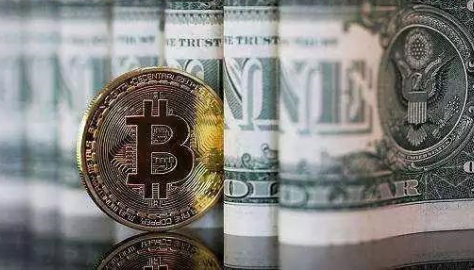The love between digital legal currency and digital token
Blockchain technology is currently experiencing a surge in popularity, but there's growing debate about the distinction between digital legal currency and cryptocurrency tokens. This article aims to explore and clarify the differences and relationships between these two concepts.
The discussions among members of the “3 AM Blockchain Group†sparked a wave of interest in blockchain innovation. While some focused on the potential of blockchain for financial gains, others were more interested in its technological applications. This has created an exciting yet complex environment in the blockchain space.
One of the first projects hailed by the crypto community as a "National Digital Legal Currency" was Venezuela’s Petro. However, this is not a true digital legal currency. Instead, it is a token representing oil assets, issued on the Ethereum network via ERC-20 standards. It is not backed by the Venezuelan bolÃvar or the US dollar, and its value depends on the crypto trading market. In essence, it is a government-backed cryptographic token, not a sovereign digital currency, nor does it function as a legal tender. The question remains: with Venezuela’s economic instability, how safe is such a token?

Digital legal currency, such as central bank digital currency (CBDC), must be fully backed by traditional legal tender. For example, a CBDC would be 1:1 pegged to the national currency, supported by reserves. However, it wouldn’t simply replicate the total amount of money in circulation, as that could create confusion and double currency systems.
The issuance of money involves several key indicators, such as M0, M1, and M2. M0 refers to physical cash in circulation, while M1 includes liquid assets like checking accounts. M2 represents a broader measure of money supply, including savings and other deposits. These metrics are closely tied to economic activity, such as GDP growth and consumer spending, which influence inflation and overall monetary stability.
How does the central bank’s digital currency policy relate to the issuance of digital legal currency?
Because of the 1:1 backing, the issuance of digital legal currency won’t mirror the total amount of physical currency. Instead, it will likely follow a distribution model based on the production, consumption, and value creation of digital assets after anchoring and reserve mechanisms are in place.
What is the nature of commercial system digital tokens?
Tokens like Tencent’s Qå¸ or loyalty points are often used as incentives for consumer behavior, functioning similarly to CPI rather than reflecting asset production. They don’t significantly impact digital currencies, and their value is limited. However, when tokens represent real-world assets—such as ownership, usage rights, or revenue streams—they can have higher value and potentially influence the issuance of digital legal currency. These tokens rely on code-based consensus and trust, forming the foundation of digital finance. This is what many in the blockchain community advocate for, as the tokenization of assets is a critical step toward the development of digital legal currency.
The relationship between digital currency and tokens is deeply intertwined. As commercial systems advance in tokenizing assets, the role of digital tokens becomes more prominent. Tokens can serve as both payment instruments and value storage, and they help shape the economic models within digital ecosystems. The distinction between tokens and cryptocurrencies is becoming clearer, and understanding this is essential for the future of digital finance.
In conclusion, digital legal currency and digital tokens don’t necessarily conflict. Each plays a unique role in the evolving digital economy. While digital currencies focus on payments and settlements, tokens drive transactions, incentives, and asset representation. Countries with strong monetary systems may adopt digital currencies more cautiously, while those with weaker economies may embrace them more rapidly. Understanding the interplay between these two forms of digital value is crucial for navigating the future of finance.
Packages For Consumer Electronics,Dual Inline Housing,Complex Integrated Circuit,Integrated Circuit Package
Shaanxi Xinlong Metal Electro-mechanical Co., Ltd. , https://www.cnxlalloys.com